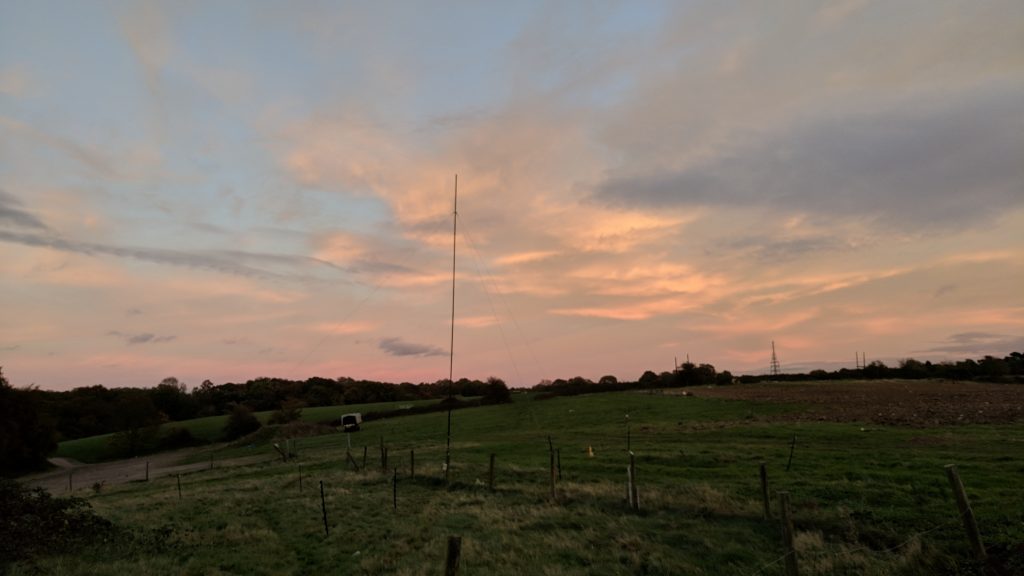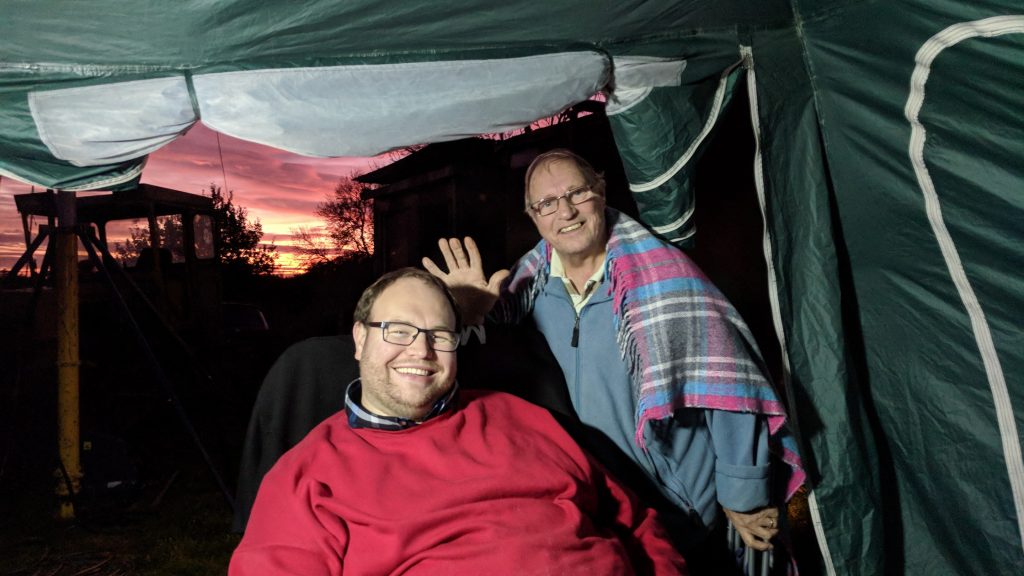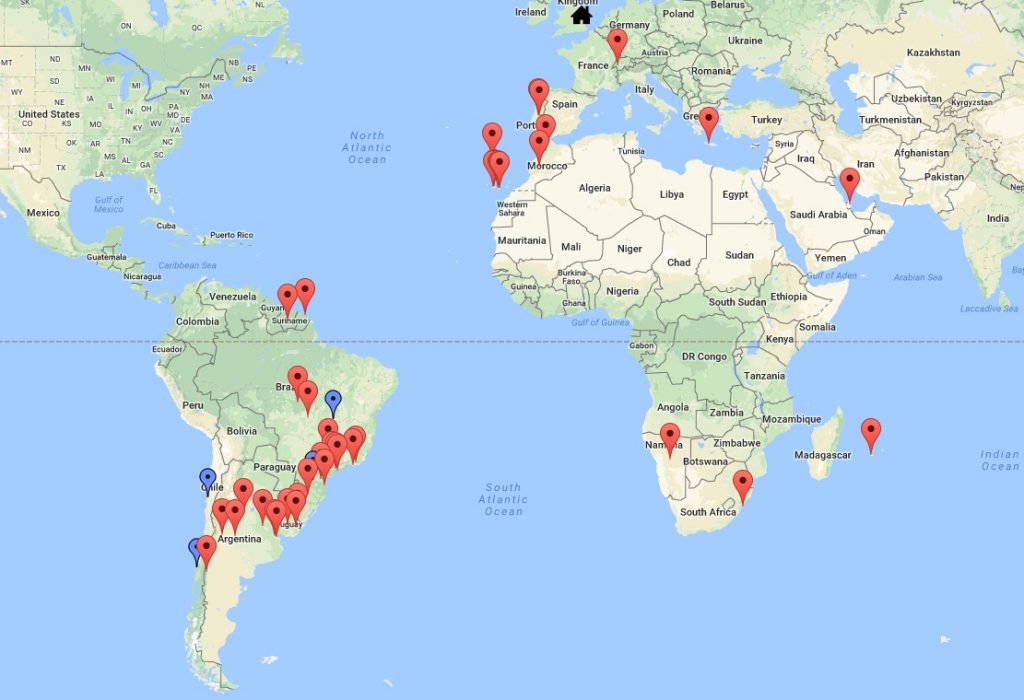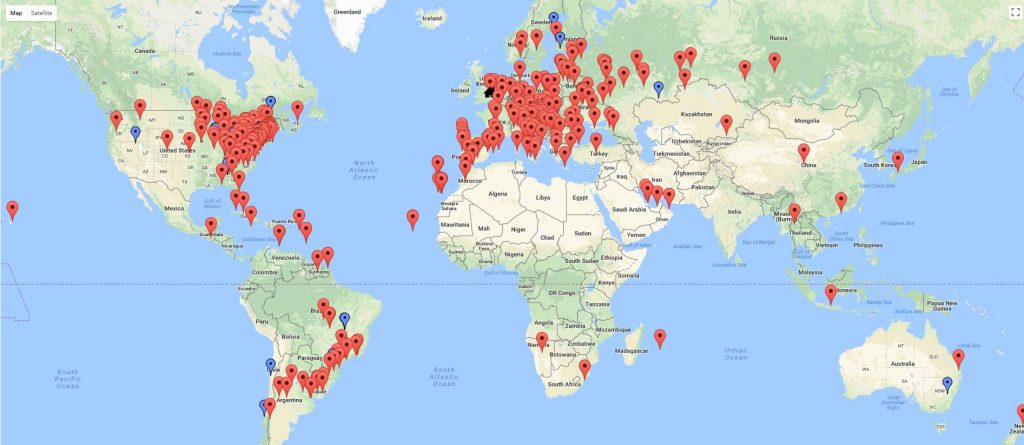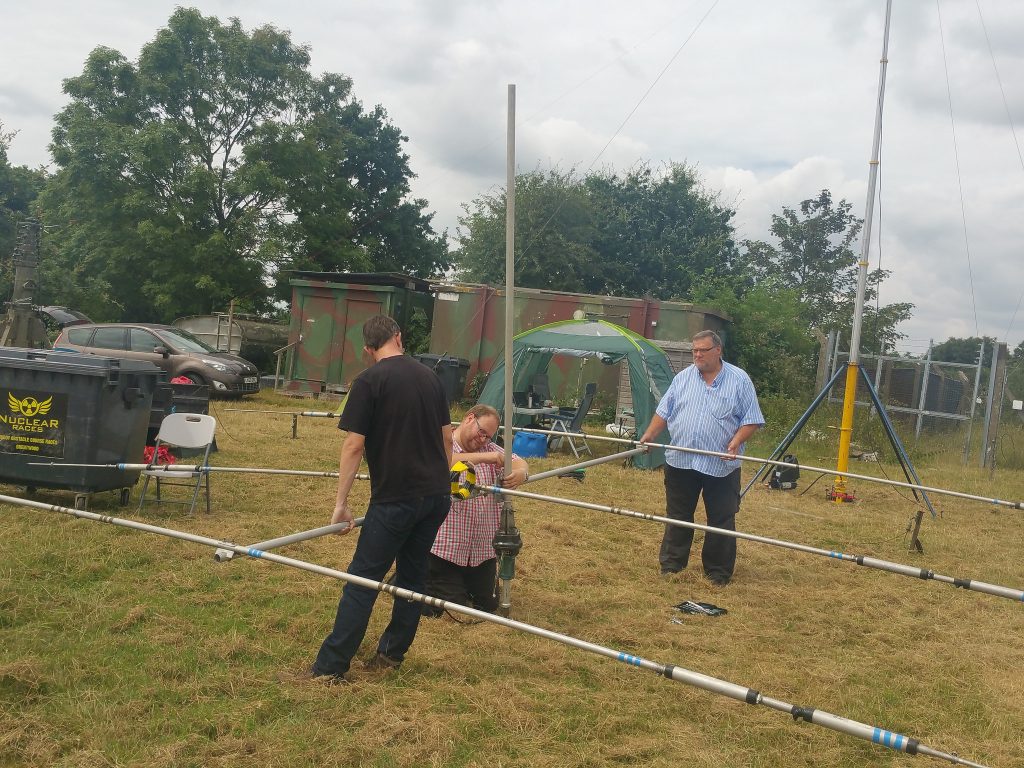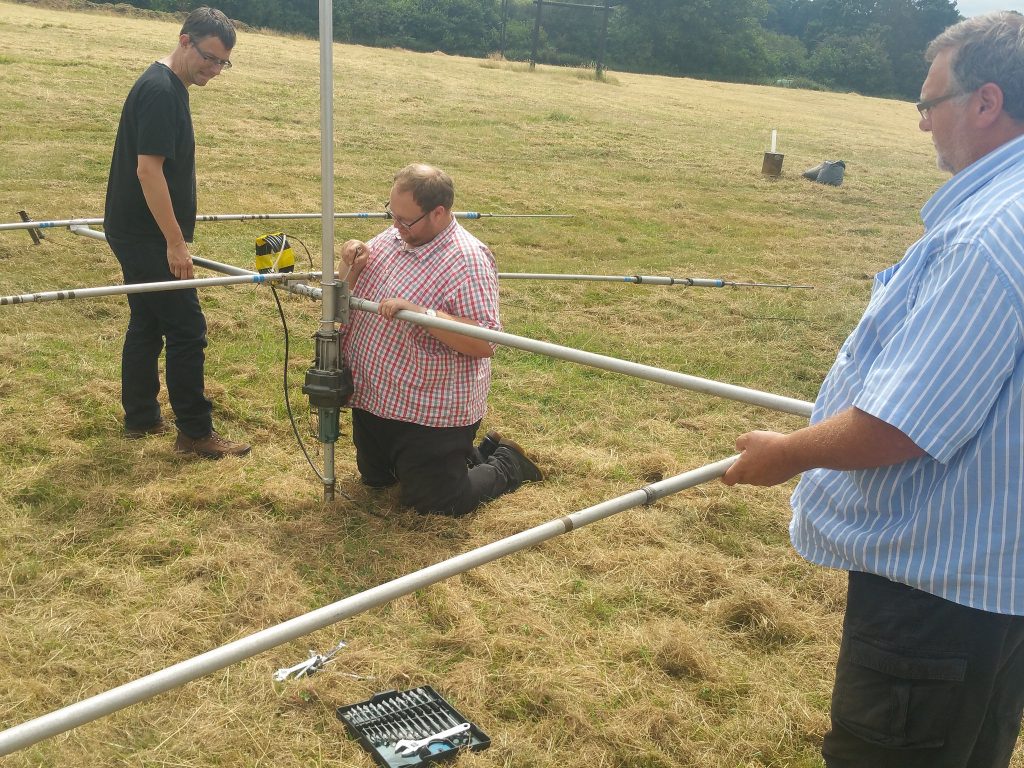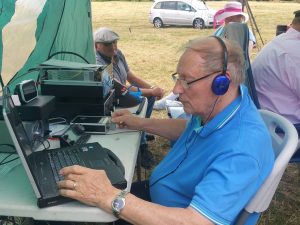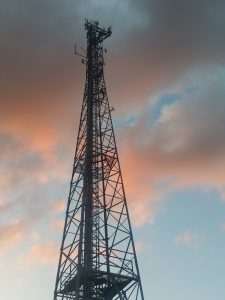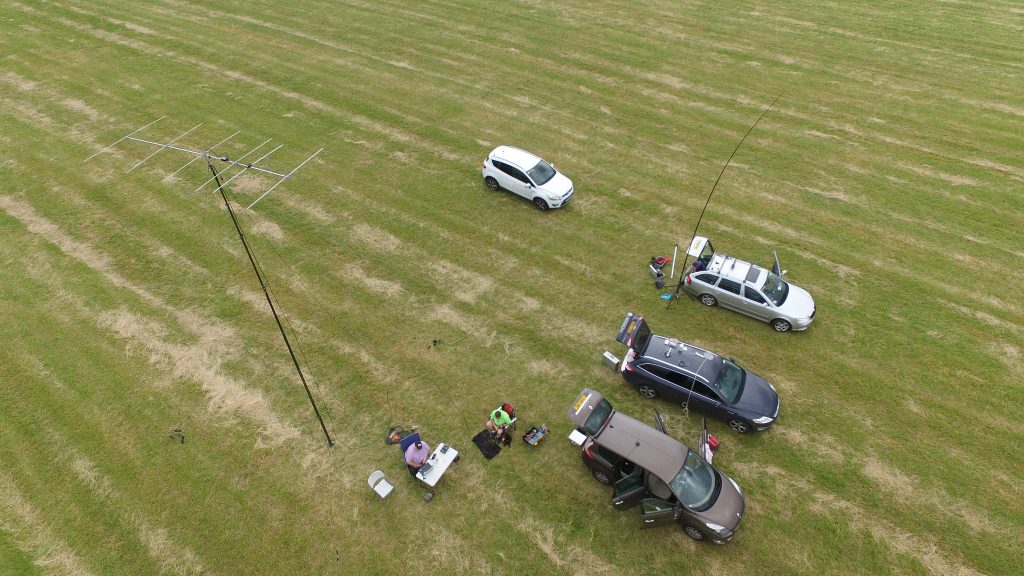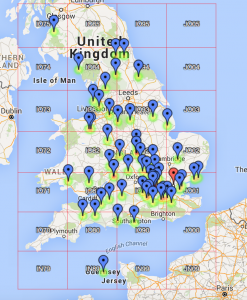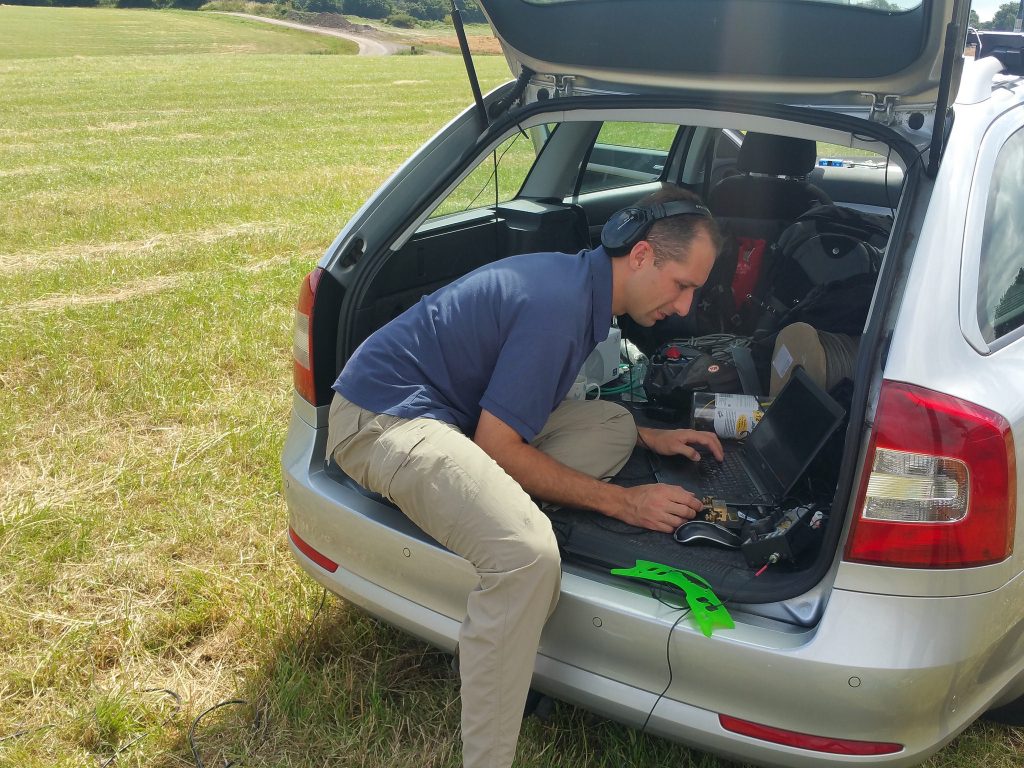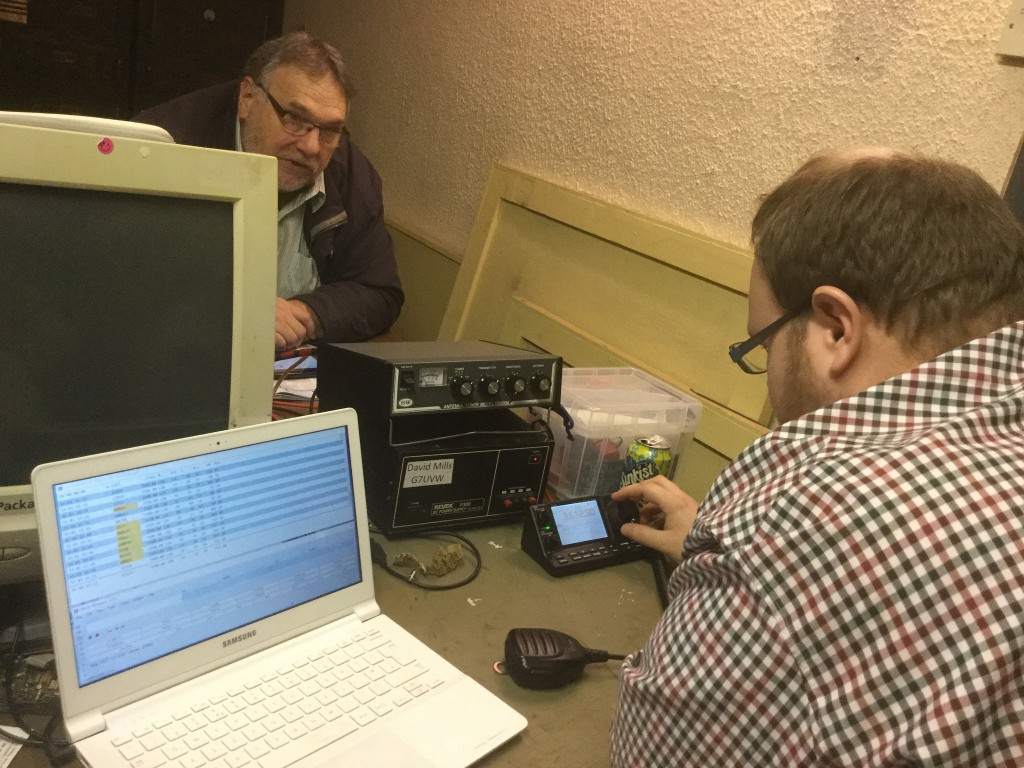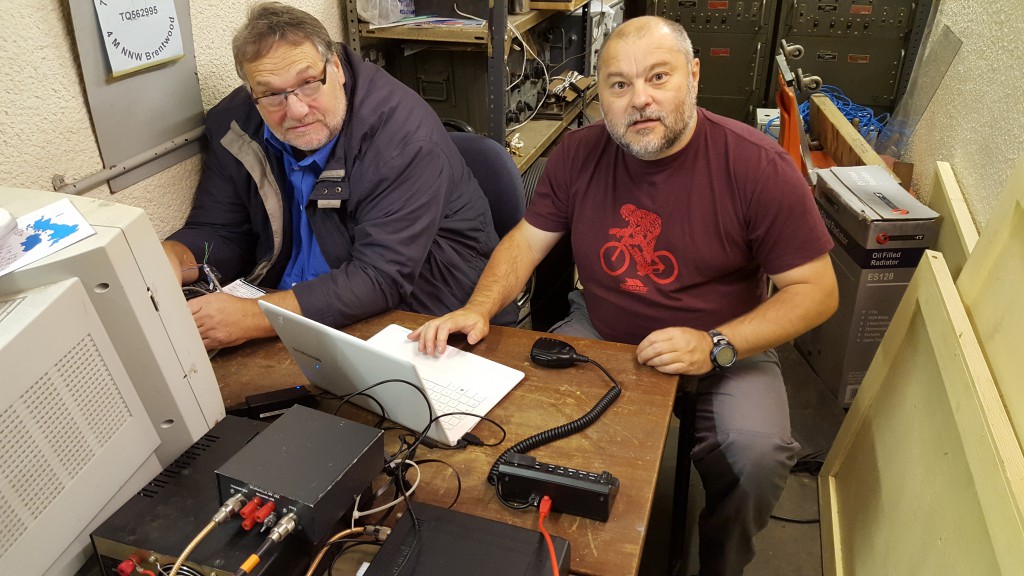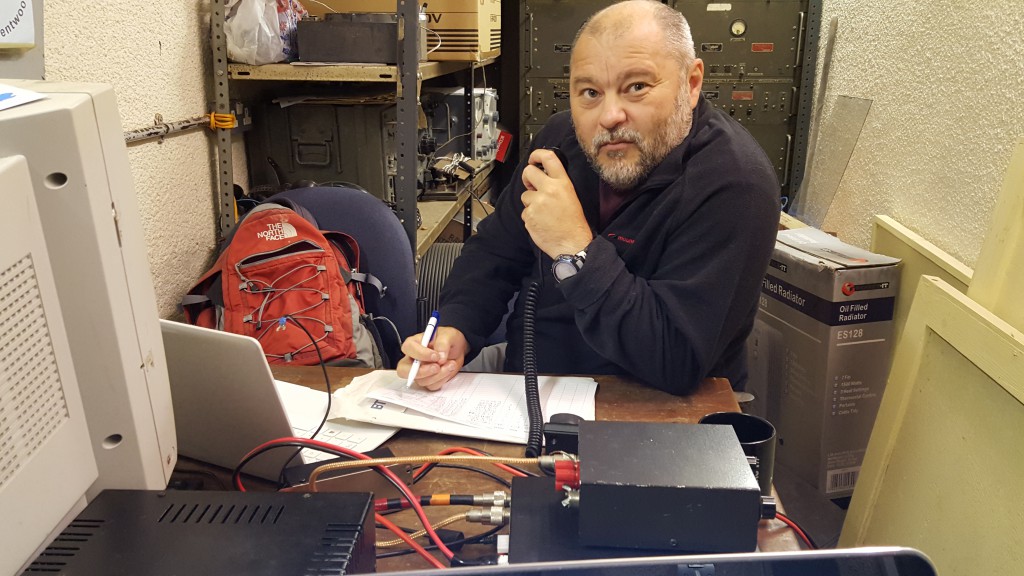
During the long Easter weekend members of the SNBCG came together for a radio weekend. Over the course of the four days, two HF stations were set up; one on 7 MHz and the other roaming between 1.8 and 28 MHz depending on propagation.
Dave M0TAZ decided he would try a 1/4 wave vertical on 7 MHz and use his recently purchased push-together fibreglass poles. These poles are often sold at radio rallies in packs of 5 (each pole 1.3 metres) to give an overall height of 6.5 meters. Using two packs of the poles, the required height of 10 metres was achieved.
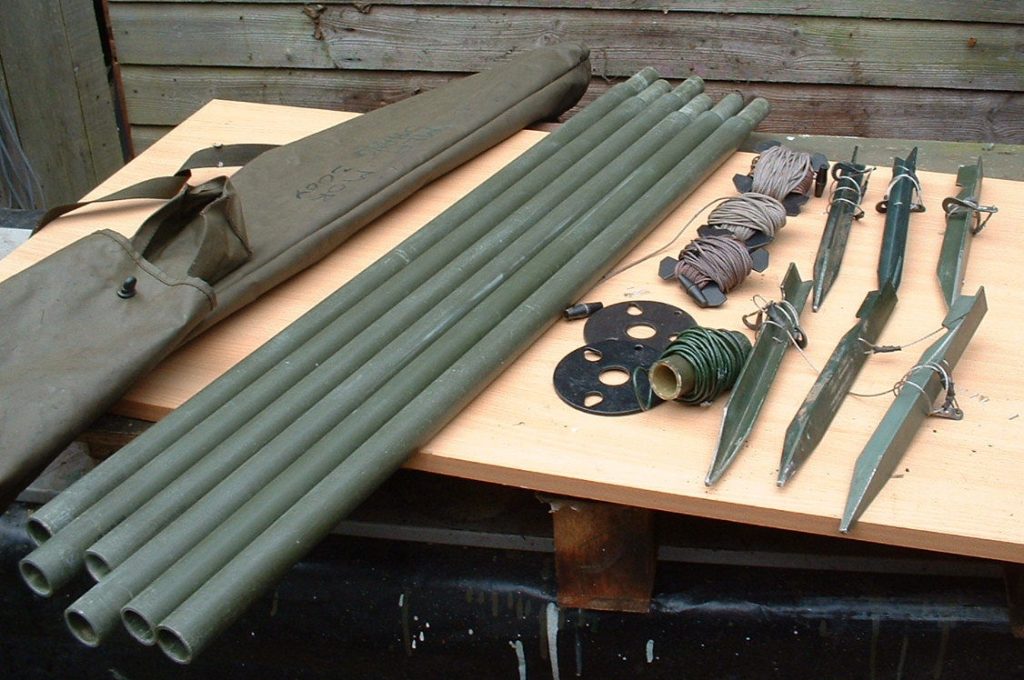
Chris G8OCV had made some supporting guy rings, these provided anchor points for the guy lines at approximately 4 and 8 meters. The first attempt didn’t quite go to plan, it simply wasn’t possible to walk up the 10m pole, as we found out when we exceed the bend radius of one of the poles. Lesson learned it didn’t make any difference as the fracture was in the joining section that was simply moved to the first section. In the end, we used 9 poles, giving us a total height of 11 meters with a simple wire running down the side for the radiator.
Six 6 radials were cut, each around 10 meters in length, and the antenna was mounted at the base of a wire fence. The earthing system included the 6 radials and the wire fence, and this provided a reasonable match around 1.5:1 at 7.150 MHz. It would have been much easier to use a push-up fishing/roach style pole but experience has taught Dave that these can be tricky to keep up without guying and tapeing over the joints. As we wanted to run linear amplifiers this weekend, the prospect of the pole moving in the wind and/or falling down made, we made up our minds to use push together poles as the first choice. The antenna was fed with coax with a choke unun (or balun) at its base to stop the coax radiating, and this needed to be capable of high power.
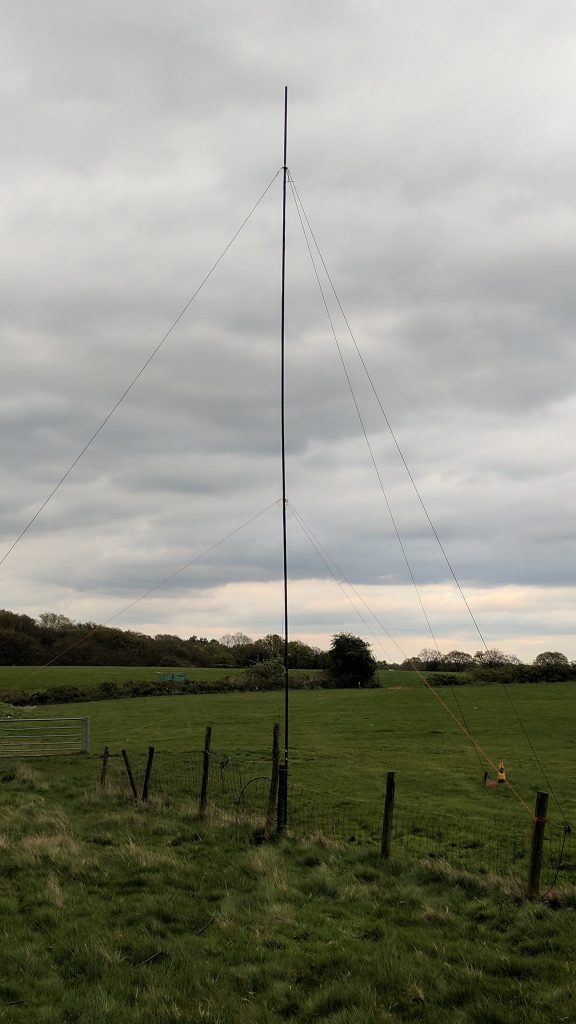
The antenna provided reliable service all weekend, and with the addition of 400W yielded over 200 contacts in 40 DXCC countries. An enjoyable part of the weekend was working DX stations later in the evenings, including the USA, Chile, Mozambique, Guinea-Bissau, Israel, UAE, Armenia and Asiatic Russia all on the 40 metre vertical.
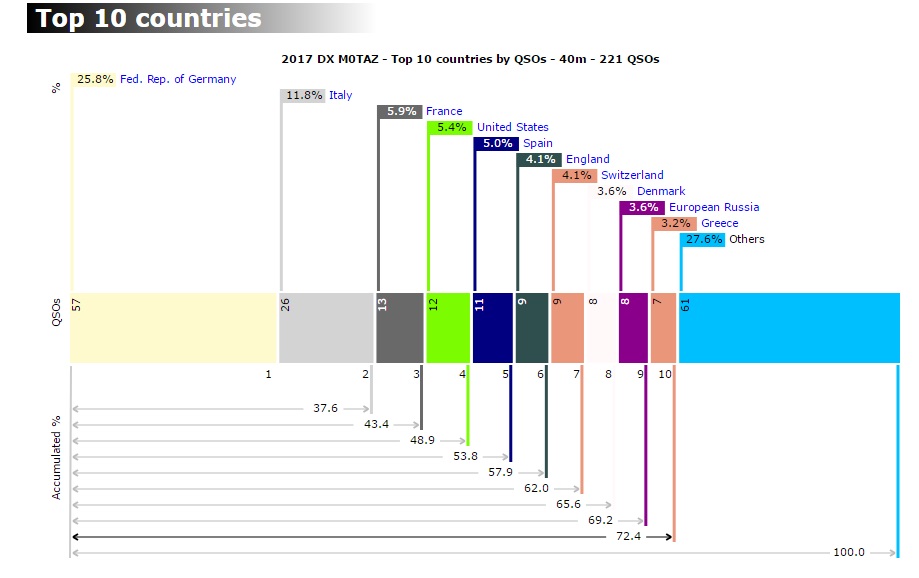
DXCC Breakdown on 40 metre vertical
George M1GEO, Fred G3SVK and others operated the other station. George chased some good DX and Fred worked several hundred stations as “GB0SNB” in CW.
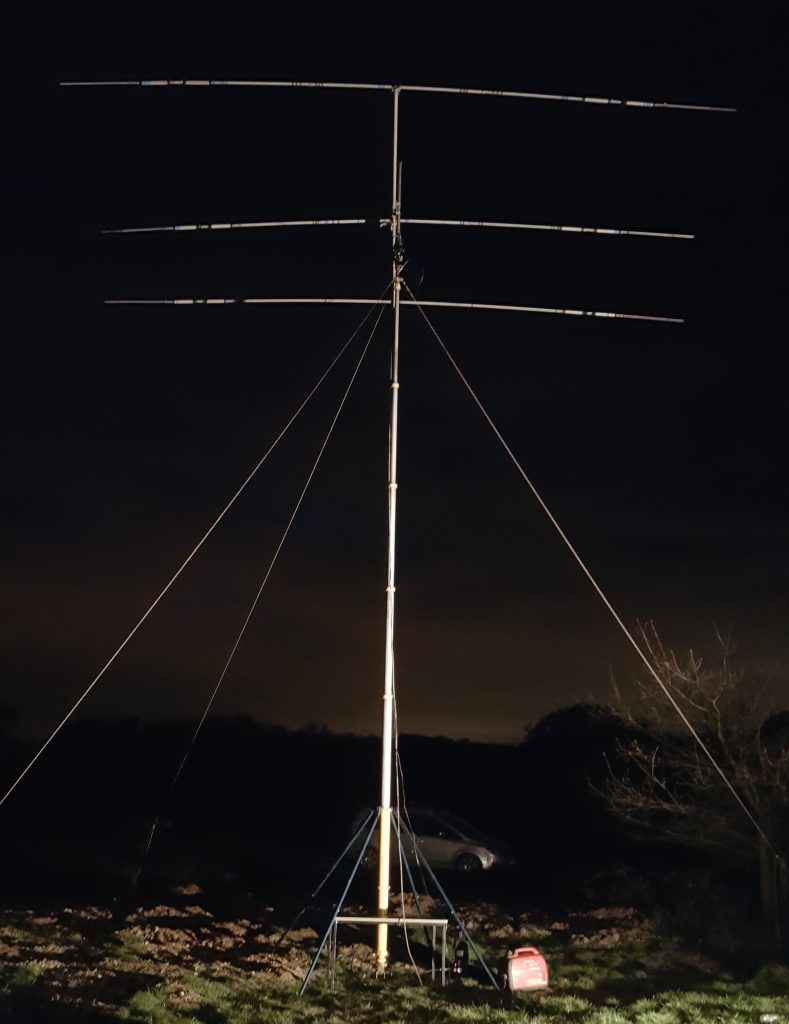
Below we see the DXCC breakdown of the second station using the mast doublet on 160 and 80 metres, and the beam (pictured above) on the higher bands. Some of the DX on the doublet and beam included several QSOs into Japan, Fiji, Trinidad, Guinea-Bissau, Cayman Islands and Argentina.
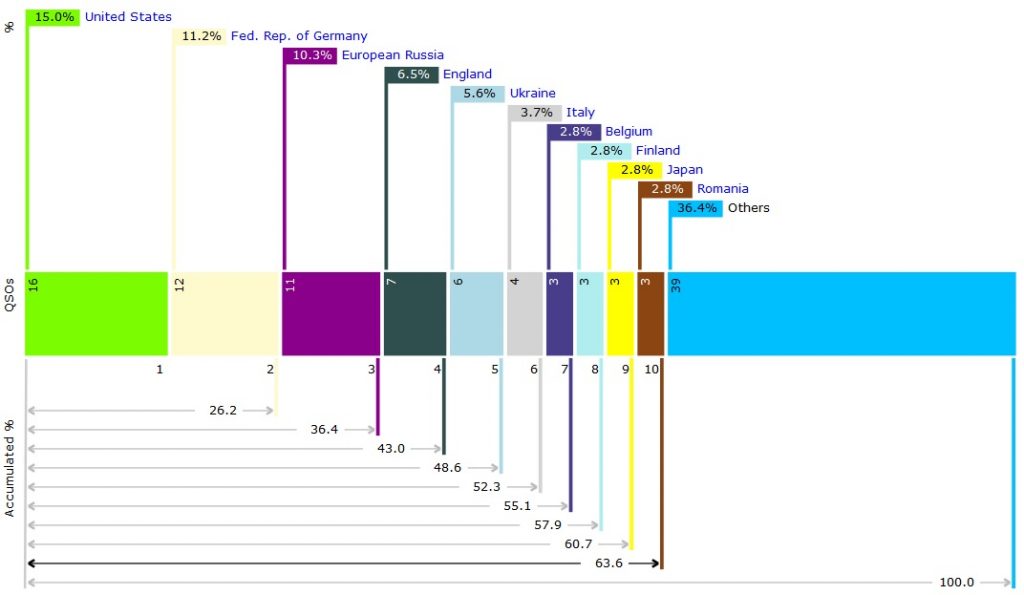
DXCC Breakdown on 160m doublet and HF beam
We also had time for a BBQ and some excellent curries provided by Fred G3SVK. It was nice to see Camb Hams members Geoff G0DDX and Linda G0TPX, and LEFARS members Derek M0XDC, Dave M0MBD and Dave M0VID. RSGB regional man Peter G0DZB also joined us for the afternoon, making the most of the good weather for a ride on his motorbike, and Bill G0IQK popped in on the Sunday afternoon.
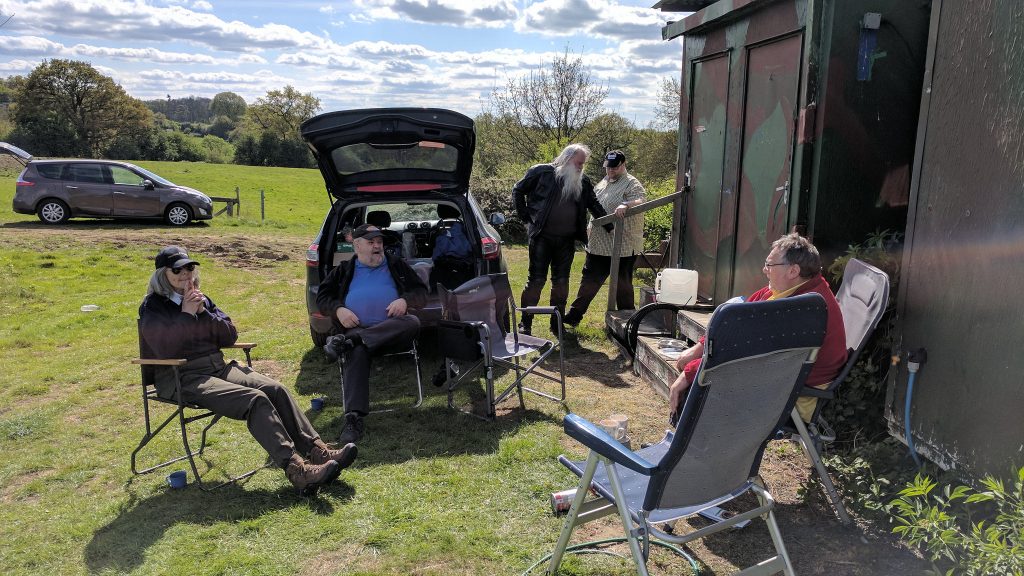
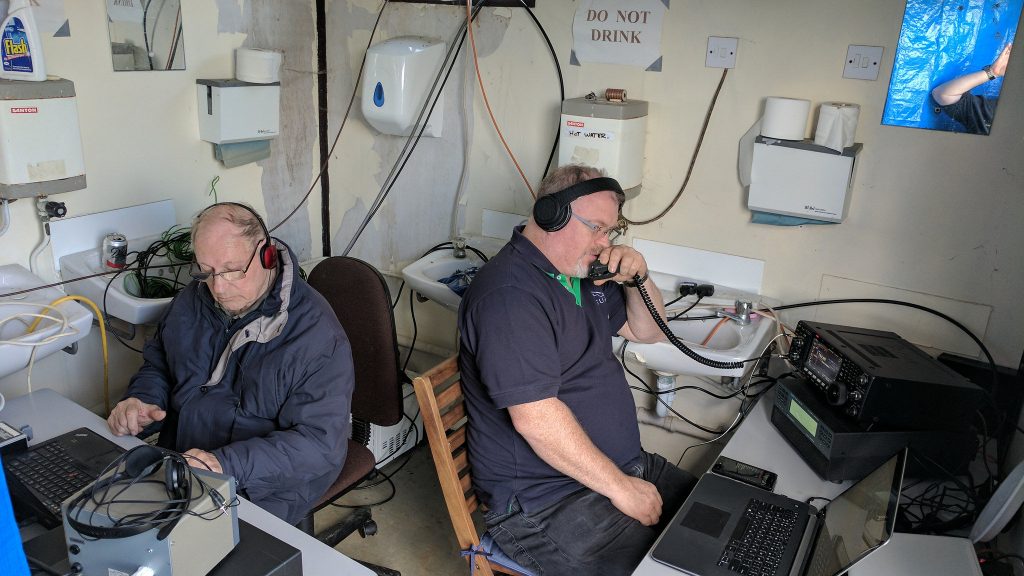
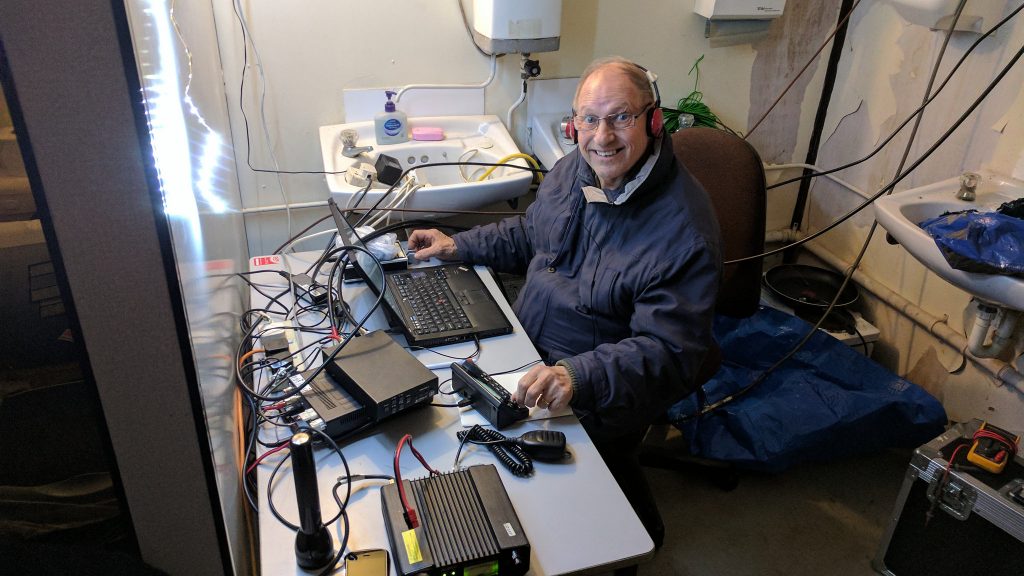
Dave M0YOL worked some data modes using his portable setup. All in all, a good weekend was had by all.
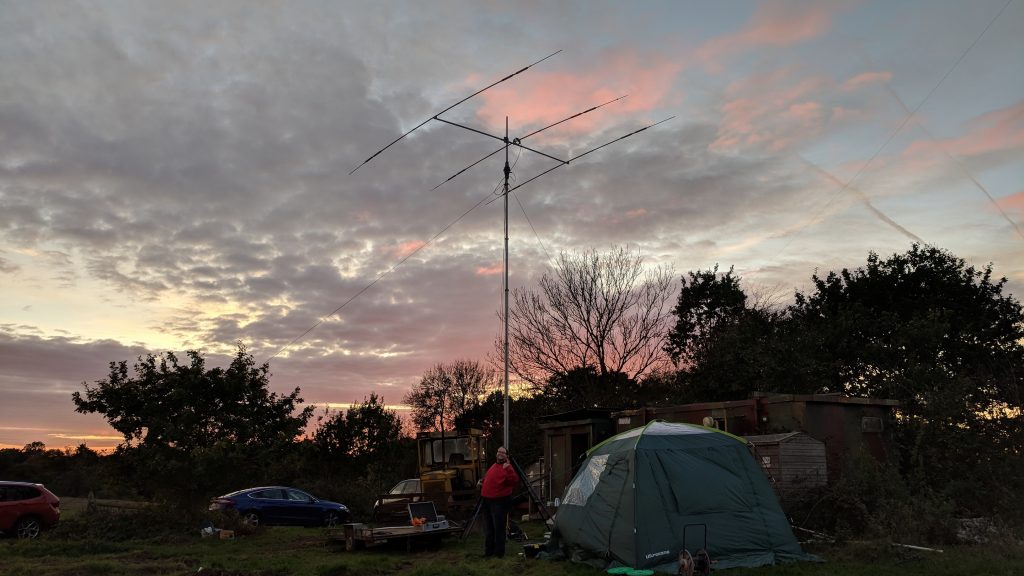 7 MHz Vertical
7 MHz Vertical